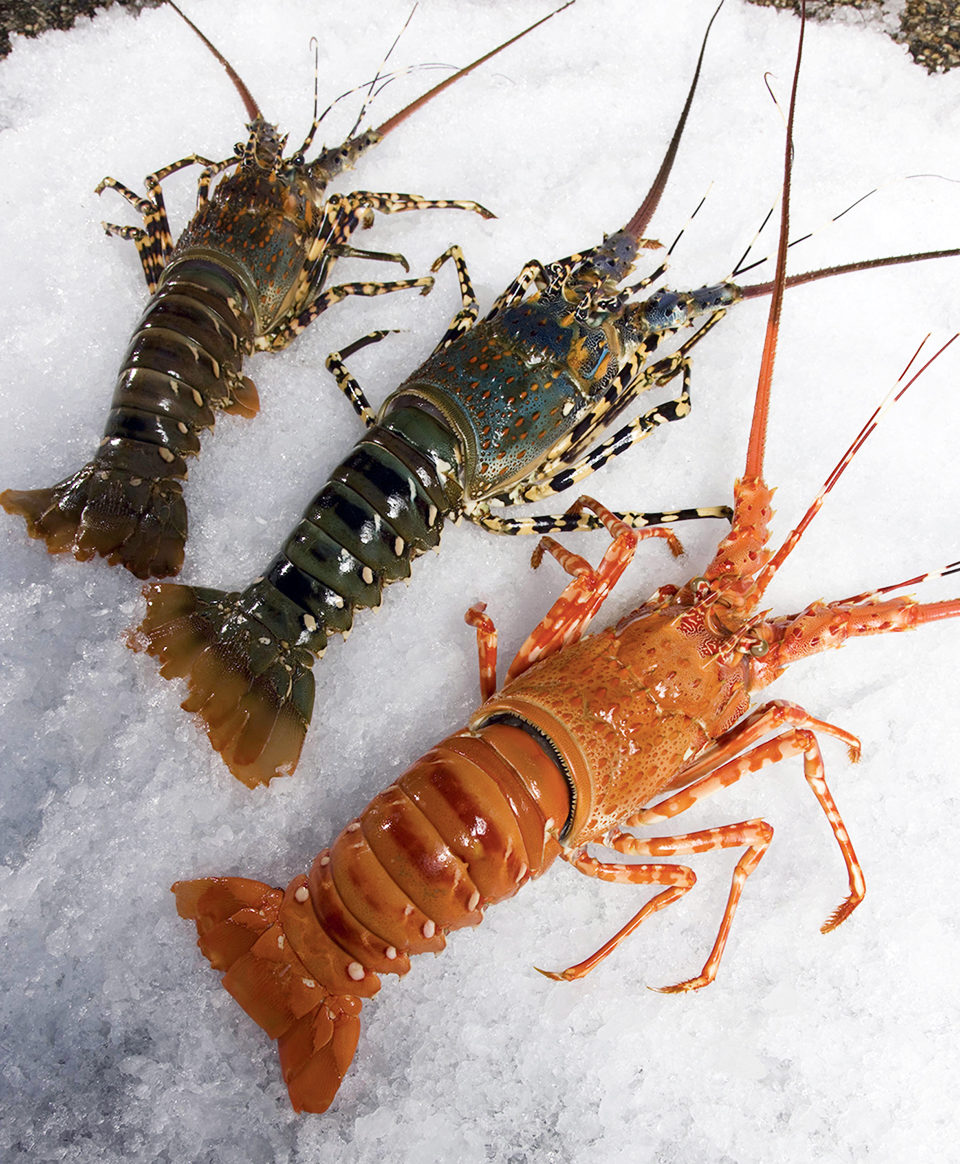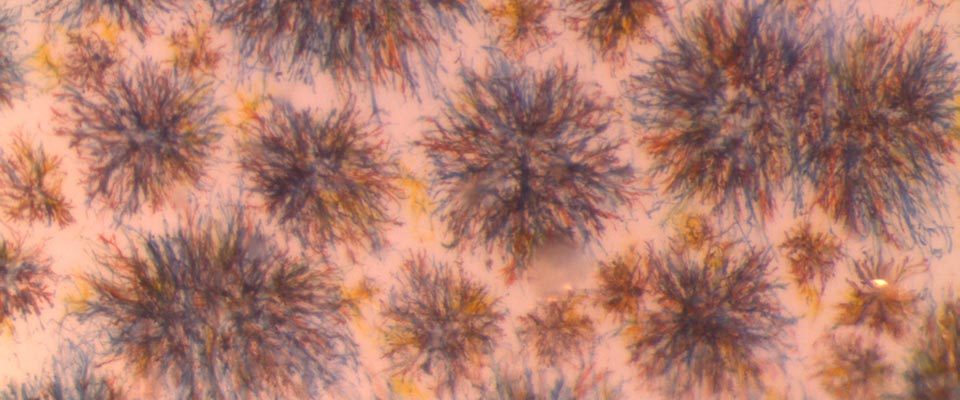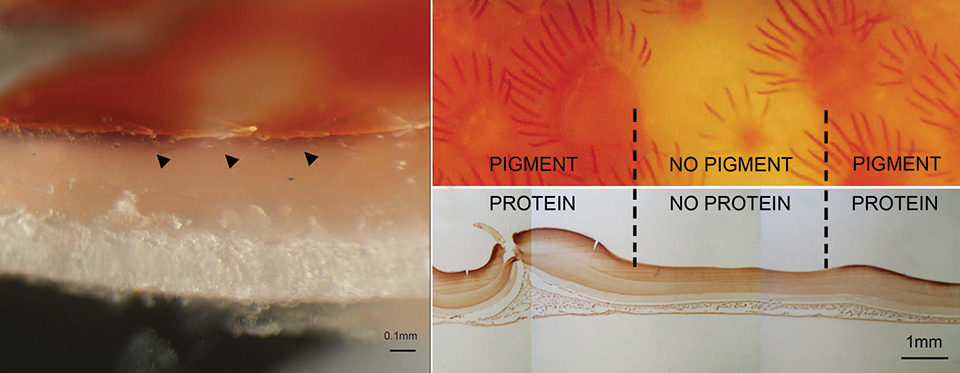Color helps avoid predation

The familiar red coloration that consumers highly desire in cooked seafood is produced by the carotenoid astaxanthin. Astaxanthin can be modified for storage and also converted to other closely related carotenoids.
Like many animals, crustaceans cannot synthesize carotenoids and must obtain them from their diets. Consequently, in aquaculture, synthetic astaxanthin supplements form a substantial cost component of commercial shrimp feeds.
As well as performing a coloration function, carotenoids are strong antioxidants that have a role in maintaining general health. Dietary carotenoid levels have been determined for improved health and coloration in many species, although the process of absorption and transport of carotenoids in animals, particularly crustaceans, is generally poorly understood.
The mechanisms for carotenoid uptake, movement and storage in shrimp represent a key area that requires further research, but also provides a clear area for improvement to consistently produce optimally colored, higher-value animals.
Color and environment
Decapod crustaceans are able to adapt the intensity of their coloration to the color of their environments. Through an extensively studied system of hormones secreted from the eyestalk, within hours they can expand or contract specialized pigment structures called chromatophores. Some species of shrimp are particularly adept at this process, with the color of their expanded or contracted chromatophores clearly visible through their thin outer shells.
Species with hard, calcified shells, such as crabs and lobsters, have chromatophores and are able to respond to their background environments in a similar way, but in a slower and more limited capacity. For all crustaceans, color provides a means of protective coloration to avoid predation, but for consumers, marked coloration of the cooked product attracts a premium market price.
Although not yet tested, variability in the color of earthen ponds may explain some of the variability in harvested shrimp across ponds or farms. However, incorporating a dark background color treatment just prior to or during harvesting of cultured shrimp may provide a means to maximize the consistency and intensity of coloration and therefore enhance the value of farmed animals.

Unique mechanism
A protein called crustacyanin forms a specific interaction with the carotenoid astaxanthin. This interaction changes the color of astaxanthin from red to any other color in the visible spectrum. In combination, this protein and carotenoid form a simple “one molecule, many colors” system that is responsible for most of the external colors seen on crustacean shells. However, this interaction is easily disrupted, as seen upon heating during cooking, when the original red coloration of the carotenoid is released.
In a recent survey of a range of organisms, crustacyanin was exclusively found in crustaceans like shrimp, crabs and lobsters. Furthermore, the presence of crustacyanin was shown to specify the color and precise patterning of the animals’ shells. This means these crustaceans have a unique mechanism of producing their color and intricate shell patterns that is not found in any other group of animals. Their colors and patterns are genetically determined, consistently recreated across each molt as they grow, and play a major role in protective camouflage, communication, mate selection and potentially speciation.
Color and genetics
Understanding the genetic regulation of crustacean coloration provides a unique avenue to maximize the efficiency of this process in aquaculture. Stimulating or selecting for animals with consistently high expression of the crustacyanin gene may provide a more powerful means to manipulate external color and also ensure that color is consistent across a large number of animals irrespective of or in combination with environmental influences.
Other genetic improvements can be made by selecting animals that absorb carotenoids more efficiently. Maximizing the uptake and utilization of carotenoids would potentially decrease the carotenoid requirement in crustacean diets.

Perspectives
Crustacean color is produced by the combination of diet, environment and genetics. Dietary carotenoid intake and background substrate both affect the intensity of the animals’ color, but underlying genetics determine the exact color and patterning the animals display. Without the presence of the crustacyanin protein, neither diet nor background affect crustacean color.
Editor’s note: This article was based on “Evolution of a Novel Carotenoid-Binding Protein Responsible for Crustacean Shell Colour,” an article by the author recently published in Molecular Biology and Evolution.
(Editor’s Note: This article was originally published in the January/February 2010 print edition of the Global Aquaculture Advocate.)
Author
-
Nicholas M. Wade, Ph.D.
CSIRO Food Futures National Research Program
CSIRO Marine and Atmospheric Research
P. O. Box 120
Cleveland, Queensland 4163 Australia
Related Posts

Aquafeeds
A look at protease enzymes in crustacean nutrition
Food digestion involves digestive enzymes to break down polymeric macromolecules and facilitate nutrient absorption. Enzyme supplementation in aquafeeds is a major alternative to improve feed quality and nutrient digestibility, gut health, compensate digestive enzymes when needed, and may also improve immune responses.

Innovation & Investment
Algae innovators aim to freeze out early-stage shrimp losses
A greenhouse in Belgium believes its innovative shrimp feed product, made from freeze-dried microalgae, packs the necessary nutrients for the crustacean’s most vulnerable life stage: the first three days of its life.

Intelligence
An inside look at Sino Agro Foods’ giant prawn MegaFarm
Sino Agro Foods has developed a proprietary recirculating aquaculture system that yields high production volumes and profitability. The facility should significantly contribute to seafood production in China and to help satisfy increasing demand for high value, safe and sustainably produced seafood.

Aquafeeds
Animal co-product hydrolysates sources of key molecules in aquafeeds
Key molecules found in animal byproduct hydrolysates show potential for use as functional ingredients in aquaculture feeds. Animal co-product hydrolysates from slaughterhouse waste and rendered animal byproducts present a protein alternative.


